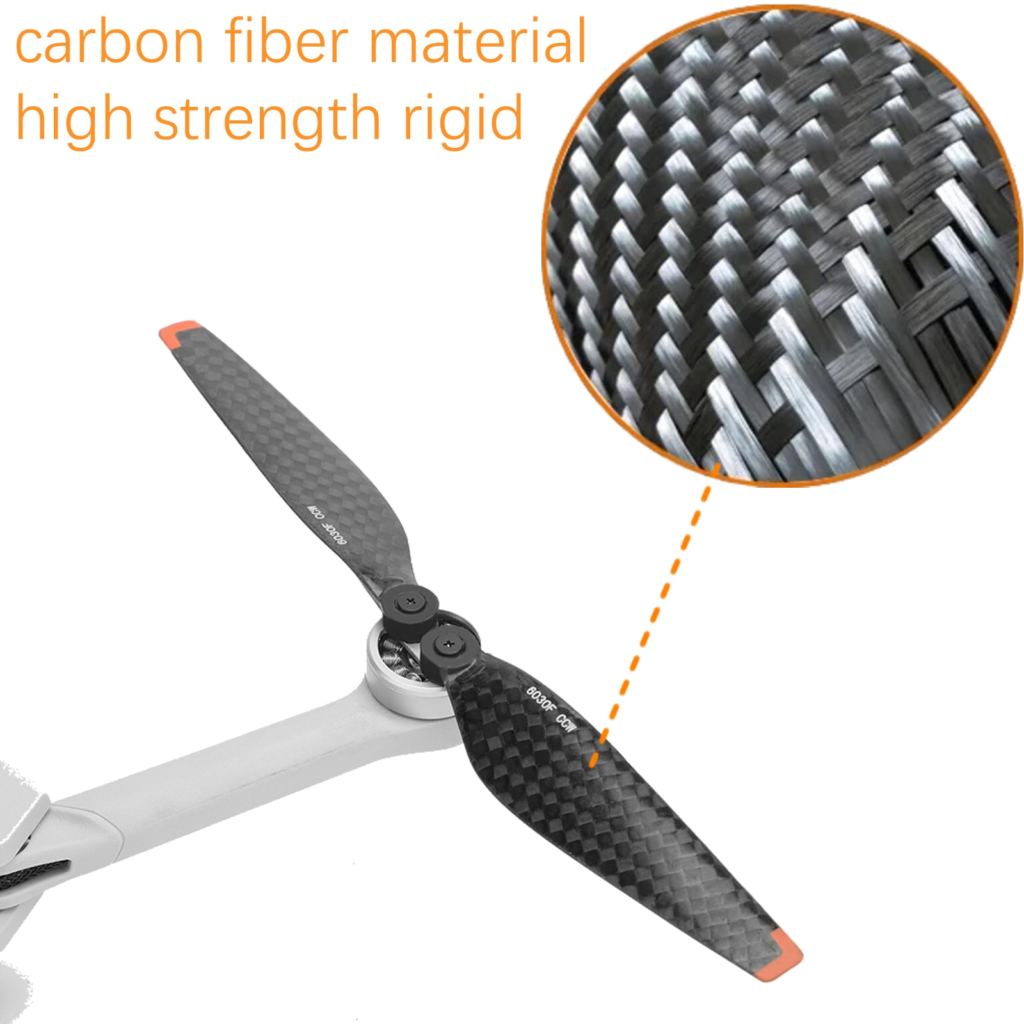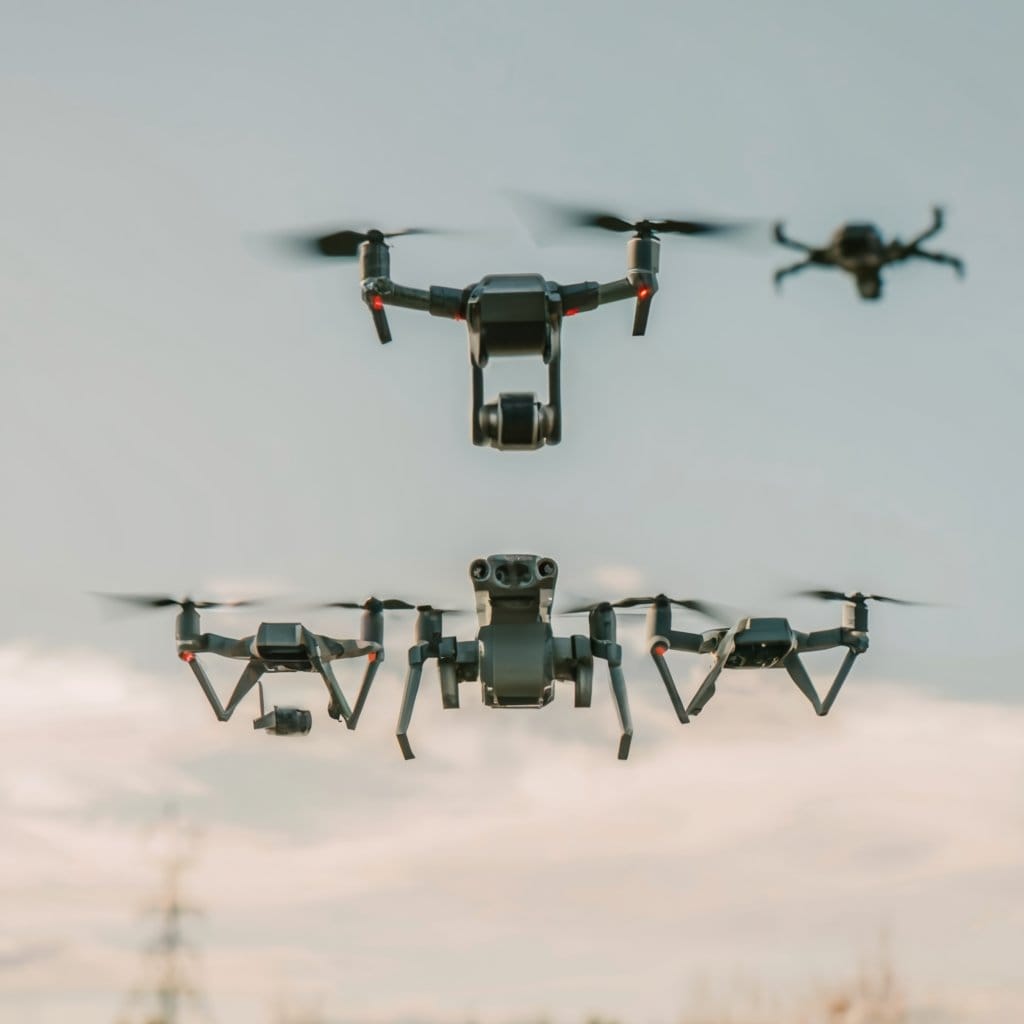
Unleashing the potential of drones lies in understanding every component, with the drone propeller being a crucial element. Research indicates that selecting the right drone propeller can significantly impact flight performance and efficiency. Factors such as material, size, and pitch play pivotal roles in determining the overall effectiveness of a drone. This blog post delves into the intricate world of drone propellers, providing insights into their importance and how they contribute to the functionality of drones.
Key Takeaways
- Choose Wisely: Selecting the right propeller is crucial for optimizing your drone’s performance and efficiency.
- Prioritize Quality: Ensure that the propellers you choose are made from advanced materials to enhance durability and flight stability.
- Design Matters: Pay attention to the design of the propeller to achieve the desired performance characteristics for your drone.
- Customization is Key: Consider custom solutions for propellers to tailor them to your specific drone needs and maximize performance.
- Stay Informed: Keep an eye on emerging technologies and trends in propeller design to stay ahead in the ever-evolving drone industry.
- Safety First: Always prioritize safety when dealing with propellers, from installation to maintenance, to prevent accidents and ensure smooth operations.
Understanding Propellers
Types and Uses
Drone propellers come in various types tailored for different UAV platforms. Understanding the differences is crucial for optimal drone performance. In multirotor drones, quadcopters typically use four propellers, while hexacopters and octocopters utilize six and eight propellers, respectively. Fixed-wing drones rely on a single propeller for forward thrust, enabling longer flight times. Hybrid drones combine features of both multirotor and fixed-wing drones, requiring specialized propellers to optimize performance.
Material Choices
Drone propellers are manufactured using diverse materials such as plastic, wood, and carbon fiber. Comparing these materials reveals distinct advantages and drawbacks. Carbon fiber propellers are lightweight yet durable, enhancing efficiency and reducing vibrations during flight. However, they tend to be more expensive than plastic or wooden propellers. The material choice significantly impacts the overall durability and performance of the propeller.
Size and Design
The size and design of drone propellers play a pivotal role in their functionality during flight operations. Understanding how these factors influence performance is essential for pilots. Larger propellers generate more thrust but require higher power consumption, affecting battery life. The design of the blades influences aerodynamics, impacting lift force and maneuverability during flight.
- Propeller size directly affects thrust generation.
- Blade design influences aerodynamics for improved performance.

Performance Factors
Several key performance factors determine the effectiveness of drone propellers in various flight scenarios. Analyzing these factors provides insights into optimizing drone operations. Propeller pitch refers to the angle at which the blades are set relative to the hub; it affects the propulsion efficiency of the drone. Diameter influences the amount of air displaced by the propeller per rotation, directly impacting thrust generation. Moreover, blade shape plays a crucial role in determining flight stability and maneuverability.
- Propeller pitch affects propulsion efficiency.
- Diameter influences thrust generation.
- Blade shape impacts flight stability.
Choosing the Right Propeller
Matching Drone Needs
Matching drone propellers to specific UAV requirements involves considering factors like altitude, payload capacity, and operational needs. The right propeller selection is crucial for optimal performance and efficiency. Customizing propellers can enhance drone capabilities by tailoring them to specific tasks.
- Altitude, payload capacity, and operational needs are key factors in selecting drone propellers.
- Customization can significantly improve drone performance by adapting propellers to specific tasks.
Design and Customization
Designing and customizing drone propellers allows for tailored solutions to unique applications. Features like silent operation and heavy-lift capabilities can be incorporated into the design process. Manufacturers of custom propellers offer a range of design options to meet diverse requirements.
- Customizing drone propellers enables tailored solutions for unique applications.
- Silent operation and heavy-lift capabilities are design options that impact propeller functionality.
Quality and Durability
Quality and durability are essential in drone propeller construction to ensure longevity and reliability. Rigorous testing procedures are employed to assess strength and endurance. Strict quality control measures during manufacturing guarantee consistent performance and safety.
- Quality and durability are critical aspects of drone propeller construction.
- Testing procedures verify strength while quality control ensures consistent performance.
Advanced Materials in Propellers
Carbon Fiber Overview
Carbon fiber is highly favored in drone propeller manufacturing due to its exceptional properties. With a superior strength-to-weight ratio, carbon fiber propellers are known for being lightweight yet incredibly durable. This material offers enhanced performance and reliability, making it a top choice for drone enthusiasts.
Utilizing carbon fiber in propeller construction results in reduced weight, which directly impacts the drone’s agility and speed. The stiffness of carbon fiber further contributes to the propeller’s stability during flight, ensuring precise maneuverability. These factors combined make carbon fiber propellers ideal for achieving optimal drone performance.

Benefits and Drawbacks
Custom drone propellers provide a range of benefits, including the ability to tailor performance to specific needs. By opting for custom designs, users can enhance their drone’s efficiency and maneuvering capabilities based on individual requirements. Custom propellers often come with unique features that can further elevate the overall flying experience.
Despite the advantages, there are some drawbacks to consider when using custom drone propellers. One primary concern is the potential increase in cost associated with personalized designs. Customization may lead to higher production expenses, impacting the overall affordability of the propellers. Moreover, customization could result in longer production lead times, delaying the availability of the propellers for use.
Designing for Performance
Custom Designs
Creating custom drone propellers involves tailoring designs to specific needs, enhancing performance for diverse applications. Customization allows for unique features like increased lift or reduced noise, meeting specialized requirements efficiently. By incorporating tailored elements, custom propellers can optimize drone functionality and overall performance.
Prototyping and Tooling
Prototyping plays a crucial role in drone propeller development, enabling designers to test various designs before mass production. Through prototypes, engineers can assess factors like aerodynamics and durability, ensuring optimal performance. Precision tooling further enhances quality by enabling consistent manufacturing of propellers with exact specifications.
Superior Design Features
High-quality drone propellers boast advanced design features that elevate performance levels significantly. These features encompass innovative technologies such as optimized blade shapes and materials to enhance efficiency. By integrating superior design elements, propellers contribute to enhanced stability, control, and maneuverability during flight.
Ensuring Propeller Quality
Importance of Quality
Quality assurance is crucial in drone propeller manufacturing to ensure reliable and consistent performance. Manufacturers implement stringent quality control measures to maintain high standards. The quality of propellers directly impacts drone safety and operational efficiency.
Propeller quality assurance involves meticulous testing processes to guarantee durability. Tests such as endurance, saltwater resistance, and wind tunnel assessments are conducted to validate propeller performance. Meeting certification standards is essential for ensuring the airworthiness of drone propellers.
Testing for Durability
- Endurance tests
- Saltwater resistance evaluations
- Wind tunnel assessments
Performance Optimization
To enhance performance, manufacturers focus on optimizing drone propellers through design modifications. These modifications aim to increase efficiency and thrust, resulting in improved flight characteristics. Performance optimization plays a vital role in achieving desired flight outcomes.
Strategies for optimizing propeller performance include:
- Adjusting blade angles
- Modifying blade shape
- Balancing weight distribution
Custom Solutions for Drones
Tailored Propellers
Customizing propellers for specific drone applications offers numerous benefits. These tailored propellers are designed to enhance overall drone performance and stability. By matching the propeller design to the drone’s unique operational requirements, efficiency is maximized.
- Tailored propellers improve performance and stability
- Customized propellers meet unique operational requirements effectively
Consultancy Services
Propeller manufacturers provide consultancy services to assist with selecting the right propellers for UAV platforms. Expert consultation plays a crucial role in optimizing drone performance through proper propeller selection. Professional advice ensures that drones operate at their peak efficiency.
- Consultancy services help in selecting the right propellers
- Professional advice optimizes drone performance through proper selection
Meeting Specific Requirements
Designing drone propellers involves meeting specific requirements crucial for operational success. Manufacturers tailor products to match altitude, payload, and noise level needs of different drones. Customized propellers address unique challenges faced by various UAV platforms effectively.
- Propeller manufacturers tailor products to match altitude, payload, and noise level needs
- Customized propellers effectively address unique challenges faced by different UAV platforms
The Future of Propellers
Innovations on the Horizon
Drone propeller technology is evolving rapidly, with continuous innovations enhancing performance and efficiency. Manufacturers are focusing on improving aerodynamics and durability to optimize drone flight capabilities. In the near future, we can expect propellers with advanced features like enhanced stability and noise reduction.
- Lightweight materials like carbon fiber are being integrated into propeller designs for increased agility.
- Variable pitch propellers are gaining popularity, allowing drones to adjust blade angles for improved maneuverability.

Emerging Materials
The development of drone propellers is witnessing a shift towards exploring new materials that offer superior characteristics. Advanced composites such as fiberglass-reinforced plastics are being used to create propellers with enhanced strength and reduced weight. These materials play a crucial role in improving drone performance and endurance.
- Titanium alloys are also being considered for their high strength-to-weight ratio, enabling drones to carry heavier payloads efficiently.
- Biodegradable polymers are emerging as sustainable options for eco-friendly drone propeller production.
Design Trends
Current design trends in drone propellers emphasize both functionality and aesthetics, influencing consumer preferences significantly. Sleek and streamlined designs not only enhance aerodynamics but also contribute to the overall visual appeal of drones. As technology advances, design elements are becoming more intricate and purpose-driven.
- Blade shapes are evolving to maximize lift force while minimizing drag, improving overall propulsion efficiency.
- Customizable color options and patterns allow users to personalize their drones while maintaining optimal performance levels.
Final Remarks
The comprehensive exploration of propellers for drones sheds light on the intricate details crucial for optimal performance. Understanding propeller dynamics, selecting the right materials, and ensuring top-notch quality are pivotal in enhancing drone efficiency. The integration of advanced materials and customized solutions paves the way for innovation in propeller design, promising improved capabilities and durability. Looking ahead, the future of propellers holds exciting prospects for the drone industry, driving advancements in aerodynamics and performance.
For those delving into drone technology or seeking to elevate their aerial operations, a meticulous focus on propeller selection and design is paramount. Embracing cutting-edge materials and tailored solutions can significantly impact flight performance and overall drone functionality. Stay informed, explore new possibilities, and harness the power of propeller innovation to propel your drone endeavors to greater heights.




